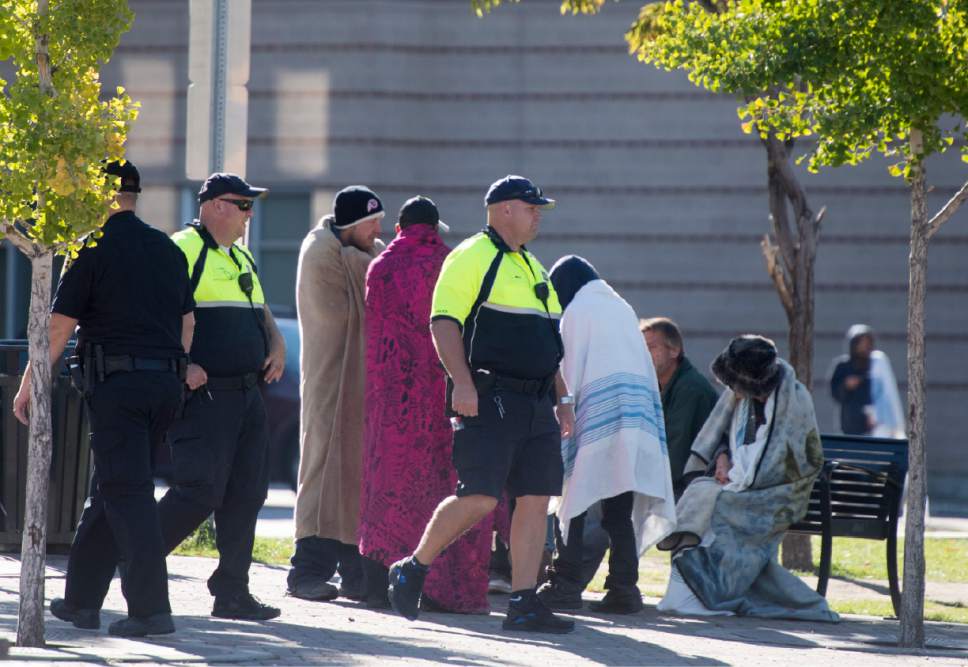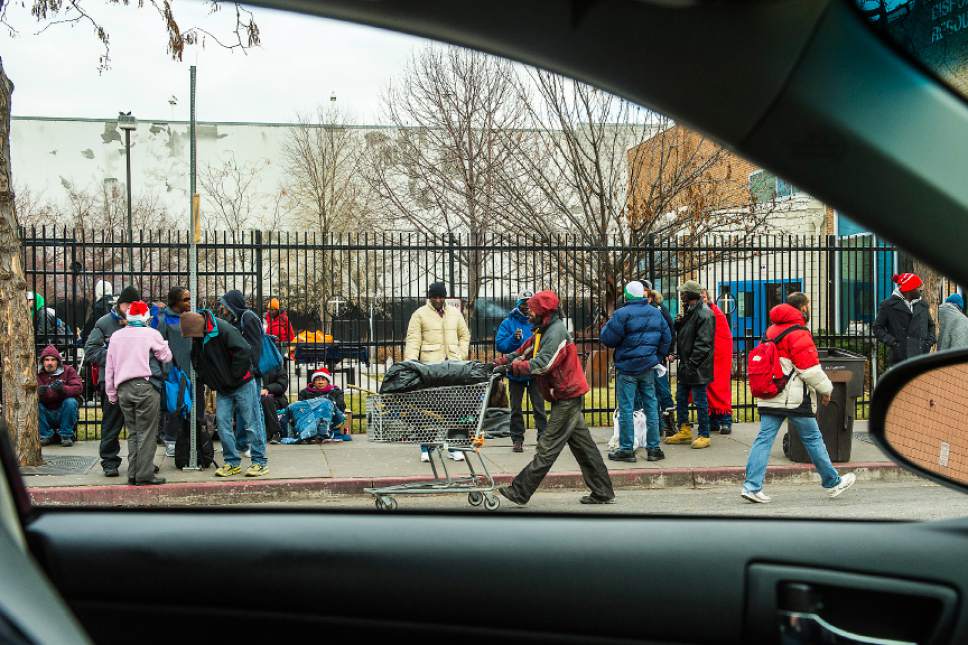This is an archived article that was published on sltrib.com in 2016, and information in the article may be outdated. It is provided only for personal research purposes and may not be reprinted.
Homelessness is up in Utah regardless of a report from the U.S. Department of Housing and Urban Development (HUD) announcing Friday that homelessness in the nation and Beehive State was down.
HUD's 2016 Annual Homeless Assessment Report to Congress found that the number of people experiencing homelessness in Utah on a single night in 2016 fell 7.2 percent from 2015.
That conclusion is at odds with anecdotal evidence seen on Salt Lake City streets, as well as data collected by the Utah Department of Workforce Services that offer more complete information than the feds.
That HUD report refers to the annual "Point in Time" count that seeks to quantify everyone living in a shelter, a car or outside during one night in January.
"Homelessness continues to decline in the U.S.," according to the report. "These one-night 'snapshot' counts, as well as full-year counts and data from other sources (U.S. Housing Survey, Department of Education), are crucial in understanding the scope of homelessness and measuring progress toward reducing it," said HUD Secretary Julian Castro.
Specifically, HUD estimates, Utah experienced a 19.5 percent reduction in homeless families, a 0.6 percent drop in veteran homelessness and a 5.6 percent decline in individuals experiencing chronic homelessness.
But yearlong data on homelessness collected by the Utah Division of Housing and Community Development reveal that homelessness jumped from 12,241 to 13,114 during that same period — a growth rate of more than 7 percent. The state's report released in May also said the population of homeless families was up 17 percent.
Tamera Kohler, assistant division director, said the state collects more data than that recorded by HUD and analyzes the record of homelessness over the entire calendar year.
"It's important to report a full menu [of data] to see what's really going on," Kohler said. "We know one night is not representative."
She noted that Utah's Point in Time count is the same as HUD's, since it is made under the direction of the state Department of Workforce Services.
More complete data help produce informed decisions, she added. "It's really important that states and communities see needs that must be addressed."
Kohler said the state agency has not yet broken down its numbers into all the subgroups identified in the HUD report. But a more in-depth analysis of the state data will become available in coming months.





